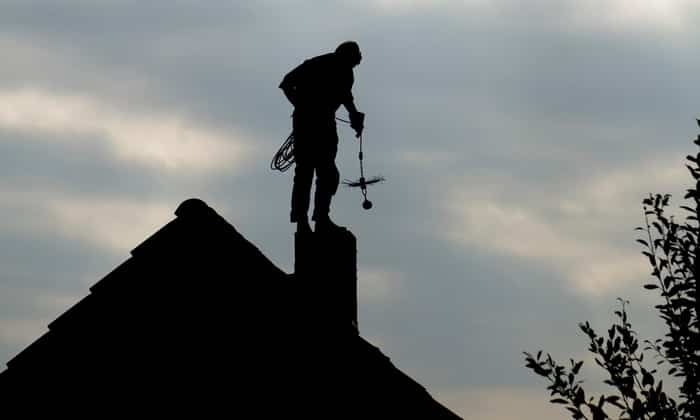

Example of creosote build-up
Importance of Having Your Chimney Swept in Spring
Having Your chimney swept at the end of the burning season, rather than waiting until fall, will give you plenty of time to address and repair any problems your chimney may have. Most chimney fires are so small they go unnoticed. In fact, you may not realize you’ve had one until your next chimney inspection. It is pretty scary to think about if your house could have burned down, and you had no idea. The main cause of chimney fires is the buildup of creosote. Creosote is a highly-acidic residue that’s created when hot combustion byproducts mingle with cool air in the chimney and produce condensation. This condensation sticks to the interior walls of the chimney, leaving a residue. Creosote can range from brown to black in color and have a consistency that’s light and flaky, sticky and tar-like, or smooth, shiny, and hard. Hard creosote is the most advanced and can cause extensive damage to your chimney, or even lead to a blockage if it’s not removed. Creosote is highly combustible and if left to accumulate, a chimney fire can and will occur, it’s only a matter of time. The very best way to prevent creosote buildup, and ultimately a chimney fire, is to have your chimney inspected and cleaned by a licensed chimney sweep, at least once a year. Soot and creosote buildup, bird and critter nests, and other debris can create blockages in your chimney. Having your chimney inspected by a licensed professional will ensure these get taken care of before they cause a major problem, such as blocked airflow, a chimney fire, or a deadly house fire.
Wood and gas can produce a variety of toxic air pollutants and combustion byproducts, such as smoke, carbon dioxide, nitrogen dioxide, soot, acidic water vapor, tar fog, and hydrocarbons. A properly functioning chimney ensures these toxic gases are safely carried out of the home. If you’ve noticed an increase in odor coming from your fireplace or smoke coming into the house instead of up the chimney, you may have an excessive buildup of creosote, soot, or another residue. Also, the buildup of residue or blockages in your chimney can lead to odors – even when your fireplace isn’t in use. Clearing out any buildup at the end of the burning season will significantly reduce the amount of odor emanating from your fireplace during the spring and summer months while increasing airflow and improving overall air quality. Broken or damaged flue tiles, a cracked chimney liner, a warped damper, and any other inconsistencies in the interior and exterior of your chimney all contribute to poor chimney performance and, in some cases, will result in a house fire. Having your chimney inspected at the end of the burning season will alert you to problems your chimney may be experiencing and will give you enough time to get them fixed before the start of the next burning season in the fall. If you schedule your chimney inspection during the spring, chances are you’re going to have a much easier time finding a chimney sweep who can accommodate your schedule as Chimney sweeps tend to be extremely busy during the fall since the majority of people wait to get their chimneys cleaned and inspected right before burning season begins. You can avoid the stress of the busy season altogether by scheduling your cleaning during the springtime! Being proactive about chimney maintenance will not only keep your fireplace and chimney in good working order but will also keep your home and family safe from potentially life-threatening situations, like fires or carbon monoxide poisoning. Give yourself the relaxation you deserve by having a lovely roaring fire on the very first cold day of the year, and by making chimney maintenance a priority this spring season! Schedule an appointment with your chimney professional today.

